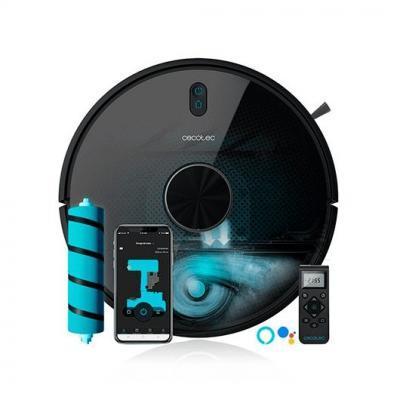
Keeping the oven clean is essential for a healthy and hygienic kitchen. A dirty oven can accumulate bacteria and germs, also becoming visually unpleasant.
But in today's innovative ovens, cleaning doesn't have to be a daunting task. Pyrolytic and hydrolytic ovens offer practical self-cleaning features that eliminate the hard work of oven maintenance.
In this article, we will explore pyrolytic and hydrolytic ovens, their cleaning mechanisms, advantages, disadvantages, and main differences. By the end, you'll be well-equipped to choose the perfect oven for your cleaning needs and budget.
What is a pyrolytic oven and how does it work?
Pyrolytic ovens offer the ultimate in self-cleaning convenience. They use a high-temperature cleaning cycle, typically reaching temperatures between 400°C and 500°C. At these scorching temperatures, grease, dirt, and food residues inside the oven are incinerated into ash.
Here's a summary of the pyrolytic cleaning process:
- Oven Lock: For safety reasons, the oven door automatically locks during the cleaning cycle to prevent anyone from accidentally opening it while extreme heat remains inside.
- Heating: The oven heats up to the designated cleaning temperature. This process can take up to an hour.
- Residue Burning: Once the target temperature is reached, the oven maintains it for a defined period, typically between 1-2 hours. At these high temperatures, all organic matter inside the oven is reduced to ashes.
- Cooling: After the cleaning cycle is complete, the oven cools down automatically. This can take several hours, depending on the model.
- Ash Removal: Once the oven has cooled enough, simply unlock the door and clean the ash residues with a damp cloth.
What is a hydrolytic oven and how does it work?
Hydrolytic ovens take a gentler approach to cleaning. They use the power of steam to loosen and remove grease and embedded dirt.
Here's a summary of the hydrolytic cleaning process:
- Water Addition: Pour a specific amount of water into the designated reservoir or tray at the bottom of the oven chamber.
- Heating: The oven heats up to a moderate temperature, typically around 100°C.
- Steam Formation: The water in the reservoir evaporates, creating steam that circulates throughout the oven compartment.
- Residue Loosening: The steam loosens and softens grease, dirt, and food particles.
- Manual Cleaning: After the cleaning cycle is complete, the interior of the oven needs to be manually cleaned with a sponge or microfiber cloth to remove the loosened dirt.
Pros and Cons of Pyrolytic Ovens
Pros:
- Highly Effective Cleaning: Pyrolytic ovens offer a more thorough cleaning. They can tackle even the toughest dirt, leaving your oven clean and shiny.
- Minimal Manual Cleaning: Once the cleaning cycle is finished, you only need to clean the ash residues.
- Hygienic: The high temperatures during the cleaning cycle effectively eliminate bacteria and germs, promoting a hygienic kitchen environment.
Cons:
- High Energy Consumption: The high temperatures required for the cleaning cycle can increase your energy bill, especially with frequent cleanings.
- Long Cleaning Time: The cleaning cycle can take several hours, and the oven needs to cool down afterward, making the process time-consuming.
- Strong Odors: The burning of food residues during the cleaning cycle can sometimes produce unpleasant odors.
- Higher Cost: Pyrolytic ovens tend to be more expensive than other types of ovens due to the complex technology involved.
Pros and Cons of Hydrolytic Ovens
Pros:
- Safe Cleaning: The lower temperatures used in the cleaning cycle make hydrolytic ovens a safer option, especially in homes with children or pets.
- Faster Cleaning Time: The cleaning cycle is typically shorter than that of pyrolytic ovens, taking about 30-60 minutes.
- Lower Energy Consumption: Hydrolytic ovens consume less energy than pyrolytic ovens due to the lower cleaning temperatures.
- More Economical: Hydrolytic ovens are generally cheaper than pyrolytic ovens.
Cons:
- Less Effective Cleaning: Hydrolytic ovens may not be as effective at cleaning heavily soiled ovens compared to pyrolytic ovens. They might struggle with burnt grease or cooked-on food particles that require more aggressive cleaning methods.
- Manual Cleaning Required: After the steam cycle loosens the dirt, it's necessary to manually clean the inside of the oven with a sponge or cloth.
- Multiple Cleaning Cycles Might be Needed: For very dirty ovens, it may be necessary to run the hydrolytic cleaning cycle multiple times to achieve the best results.
Comparative Table: Pyrolytic vs. Hydrolytic Ovens
For a quick analysis between these two cleaning systems, check out our comparative table.
| Parameter | Pyrolytic Oven | Hydrolytic Oven |
| Cleaning Method | High-temperature Incineration | Steam |
| Cleaning Efficiency | Very effective, cleans even the toughest dirt | Less effective on heavily soiled ovens |
| Time Required | 1-4 hours (cleaning and cooling) | 30-60 minutes (cleaning) |
|
Safety |
High heat requires caution, door locks during cleaning | Lower temperatures, safer for homes with children or pets |
| Post-Cleaning | Easy removal of ashes | Manual cleaning required |
| Energy Consumption | High | Low |
| Cost | More expensive | Cheaper |
Additional Considerations
When choosing the most suitable cleaning method for you, consider how often you clean your oven. If you do frequent light cleanings and only occasional deep cleanings, a hydrolytic oven may be sufficient. However, for ovens that require deep cleaning more often, a pyrolytic oven might be a better choice.
Keep in mind that both cleaning methods can generate some odors, so make sure your kitchen has adequate ventilation, especially during pyrolytic cleaning cycles.
Finally, don't forget that the cleaning method is just one of several factors to consider when choosing an oven. Many ovens, regardless of the cleaning method, come with additional features such as different cooking modes, touch screens, and even WIFI connectivity. Consider these features when making your decision.
Guaranteed Savings
Regardless of the type of oven you choose, time and effort savings are guaranteed compared to traditional oven cleaning methods.
If you've made it this far, all that's left is to step into Aquário's store, where you'll find a wide selection of pyrolytic ovens and hydrolytic ovens that fit your needs and budget. Check out the available stock or visit one of our stores to find the perfect oven for your dream kitchen!









Comments